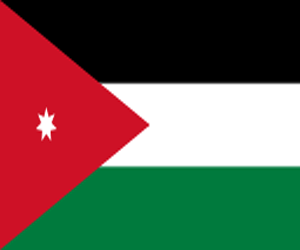TO BE RE-COMPOSED SOON !
PAST COMPOSITION ( 2016-2018, then 2018-2021)
COORDINATORS :
- Ahmad Al Safi (SUDAN) , E-mail: ahmadalsafi@gmail.com
- Mansour Nadhari (UAE) , E-mail: mnadhari@gmail.com
MEMBERS :
- khaled Al sarahneh (PALESTINE) , E-mail: kalsara2003@yahoo.com
- Jamil Shaaban (LEBANON) , E-mail: jamil.shaaban@cmc.com.lb
- Tariq Alzahrani (KSA) , E-mail: tariq0404@hotmail.com
Pan-Arab Federation of Societies of Anesthesia, Intensive Care and Pain Management (PAFSA)
Strategic Plan
[2016-2020]
Pan-Arab Federation of Societies of Anesthesia, Intensive Care and Pain Management
PAFSA mailing address:
C/O Pr.Patricia YAZBECK
Department of Anesthesia and Surgical Critical Care,
Hotel-Dieu University Hospital,
PO Box : 166830 Ashrafieh,
Beirut-Lebanon.
Tel: + 9611615300 ext. 8941
Email: president@pafsaco.org
Website: www.pafsaco.org
Strategic Plan 2016-2020
© Pan-Arab Federation of Societies of Anesthesia, Intensive Care and Pain Management (PAFSA)
All rights reserved
Credits:
Strategic Plan Ad hoc Committee :
- Ahmad Al Safi (SUDAN)
- Jamil Shaaban (LEBANON)
- Khaled Al sarahneh (PALESTINE)
- Mansour Mohamed Yousef Nadhari (UAE)
- Tariq Alzahrani (KSA)
PAFSA Founding and Executive Committee members :
- PAFSA President 2016-2018 : Patricia Yazbeck ( LEBANON )
- PAFSA Ex-Presidents and Founding Members
- PAFSA Executive Committee 2016-2018 members
Contents
- Introduction
- Background and History
- Philosophy
- Vision
- Mission
- Goals
- Core Values
- Objectives
- Membership
- Relevance
- Strategic Goals
- Advisory Role
- Increased Membership
- Enhanced Visibility
- Capacity Building
- Advocacy
- Finance
- International and Regional Initiatives
- SWOT Situation Analysis
- PEST Situation Analysis
- Organization of the Strategic Plan
- Strategic Priorities
- Strategic Priority 1:
- Strategic Priority 2:
- Strategic Priority 3:
- Strategic Priority 4:
- Strategic Priority 5:
- Strategic Priority 6:
- Strategic Priority 7:
- Strategic Priority 8:
- Strategic Priority 9:
- Strategic Priority 10:
- Strategic Action Plan Focus by Year
- Monitoring and Evaluation
The Pan-Arab Federation of Societies of Anesthesia (PAFSA) Executive Committee (EC) developed this Strategic Plan to provide PAFSA with a five-year roadmap for activities, services and organization development.
This plan has been developed by an ad hoc committee assigned by PAFSA President. In its work, the committee involved all PAFSA EC members, PAFSA Ex-presidents, all PAFSA member societies and World Federation of Societies of Anesthesiologists (WFSA).
For logistical reasons, the committee developed a tight schedule for working online. The committee developed the vision, mission and core operating values, and the assumptions underlying PAFSA approach to its work and strategic directions. Priorities were identified and strategic plan developed.
The EC will review and update the plan every 6 months as necessary.
1.1. Background and History
With a Jordanian initiative, and after forming the Arab Anesthesiology Scientific Committee, PAFSA was established in 1986 with 10 founding societies of Anesthesiologists of Jordan, Syria, Lebanon, Kingdom of Saudi Arabia, Iraq, Egypt, Tunisia, Algeria, Kuwait and United Arab Emirates.
In 1985, the 1st Pan Arab Congress of Anesthesia and Intensive Care was held in Amman, the 2nd in Cairo in 1987, the 3rd in Tunisia in 1989, the 4th in Damascus in 1993, the 5th in Cairo in 1997, the 6th in Abu-Dhabi in 2000, the 8th in Beirut in 2004, the 7th was held in retrospect in 2006 in Algiers, the 9th in Sharjah in 2009, the 10th scheduled to be held in Damascus and Beirut in 2011 and 2013 was cancelled because of war, and held later in Amman in 2014 with a joint organization by the Jordanian and the Lebanese Societies of Anesthesia in collaboration with the WFSA and the ESA. The 11th congress was held in Dubai in 2016 in collaboration with the WFSA and the ESA.
In 2017, PAFSA formulated this first Strategic Plan for the period 2016 to 2020, and reviewed its bylaws and constitution documents.
1.2. Philosophy
1.2.1. Vision
PAFSA strives that Arab societies of anesthesiology develop a culture of scientific and technical excellence, and that individual anesthesiologists are enabled to attain their full professional potential.
1.2.2. Mission
PAFSA aspires to make Arab societies of anesthesiology instruments of positive change in health care delivery and sustainable development in their respective countries and the region.
1.2.3. Goals
- Strive to be among the world's leaders in patient quality and safety care, clinical outcomes, education, training and research.
- Connect Arab societies of anesthesiology to contribute to the advancement of anesthesiology, intensive care and pain management.
- Make the voice of the specialty heard by policymakers.
- Establish a culture of professional excellence in the Arab world.
1.2.4. Core Values
- Equity
- Integrity
- Respect for diversity
- Patient Safety
- Collaboration & teamwork
- Commitment to community
- Customer-centred service at reasonable cost
- Professionalism
- Excellence
- Compassion
- Respect of all beliefs
1.2.5. Objectives
As per Constitution.
1.3. Membership
As per Constitution.
1.4. Relevance
PAFSA membership is drawn from societies of anesthesiology in Arab countries that are duly formed and officially recognized in their respective countries. PAFSA is therefore as strong as its members are. It would be effective if:
- It supports the formation of societies in countries where none exist,
- It participates in improvement of the specialty by education, training and research.
- It links anesthesiologists, intensivists and pain physicians and upholds their voice in their respective countries.
- It offers societies of anesthesiology a platform for interaction and collaboration with their counterparts regionally and internationally.
- It strengthens existing societies through provision of capacity building.
- It facilitates the networking of societies to bind their collective strengths to enhance their impact at regional level.
While striving to be regionally relevant and locally effective in response to the ever-growing corpus of science and technology in anesthesiology, PAFSA will continue to provide:
- Credible information
- Evidence-based advice
- A voice of science whereby it provides a synthesis of the best scientific information and making it available.
- A platform for exchange of information and experience among anesthesiologists, societies and countries.
The following six advisory roles were set for this strategic plan.
2.1. Advisory Role
PAFSA shall serve as an independent platform providing evidence-based scientific advice to policymakers and health care providers. This shall be provided through policymakers’ booklets of policy briefs on topics of regional concern or relevant global interest.
2.2. Increased Membership
As a network, PAFSA is as strong as its constituent member-societies are. Support will be provided to facilitate creation of societies in countries where none exist.
2.3. Enhanced Visibility
To enhance PAFSA visibility during the 2016-2020 strategic planning period, modern multi-media avenues will be utilized to effectively communicate outputs and outcomes of processes, events and activities. PAFSA’s website will be redesigned to become more user-friendly, Facebook and Twitter accounts will be created to enhance social networking and communication with various stakeholders on the region. PAFSA’s communication strategy will be improved and avenues for enhancement will continually be sought.
2.4. Capacity Building
Strengthening member societies to develop their advisory capacity remains PAFSA’s top priority. To this end, financial support will be competitively awarded through capacity building grants for the enhancement of facilities at the secretariats of some societies. Human resource capacity development will be fostered through training workshops for society staff and officials, where resource mobilization and working with committees were among topical issues. Additionally, PAFSA-mentorship will be encouraged to promote sharing of experiences and acquisition of relevant operational skills. In a majority of the capacity building activities supported by PAFSA, the involvement of young anesthetists will be fostered.
2.5. Advocacy
In order to present a unified voice for policy development in anesthesiology, PAFSA will continue to hold conferences, workshops and seminars. During the strategic plan period, distinguished experts and top scientists with global recognition will be engaged in PAFSA academic activities. Dialogues between anesthetists and policymakers, or anesthetists and the private sector, will be organized to influence policy development in the Arab region.
2.6. Finance
To ensure that PAFSA exists as a perpetual and independent institution, both short-term project and long-term institutional funding will be sought. Funds will be raised and set apart as the PAFSA Endowment Fund. Partnerships will be forged to provide financial support towards PAFSA projects and programmes. Synergistic opportunities will be systematically explored to leverage limited resources and raise corresponding activity funding. Deliberations on payment of subscription fees and giving donations by member-societies to PAFSA will be initiated.
Policy Context
2.7. International and Regional Initiatives
The most outstanding achievement in the past years was the registration of PAFSA as a legal entity in WFSA in 1990. This Strategic Plan of PAFSA ushered its regional initiatives by acquiring membership in the Arab League. PAFSA will set the stage to contribute to the implementation and achievement of the Arab League Agenda. The primary objective is to build a viable network of anesthesia societies based on inclusive growth and member-driven sustainable development.
The Strategic Plan of PAFSA aims to respond to the following strategic objectives:
- Enhance effectiveness of member societies in addressing/implementing priority areas, including achieving high standard practice, decrease morbidity and mortality, enhance safety.
- Improve technical competencies and institutional capacity in anesthesiology.
- Facilitate policy reforms, and resource mobilization.
Furthermore, the priority activities of PAFSA will take into consideration other global and regional initiatives and innovations in anesthesiology.
2.8. SWOT Situation Analysis
|
Strengths |
Weaknesses |
|
|
|
Opportunities |
Threats |
|
|
2.9. PEST Situation Analysis
PEST analysis is an analysis of the external macro-environment (political, economic, social and technological) that affects all institutions. Such external factors usually are beyond the control of PAFSA and its member societies but affect them nonetheless. Changes in the external environment also create new opportunities.
This plan has two purposes. First, it presents the most comprehensive compilation of the plan and its component parts as agreed upon in the GA 2016. Second, it is a reference guide for strategic planning. In the future, PAFSA may provide a summary version of the plan for wider distribution.
4.1. Strategic Priority 1:
Facilitate the establishment of new national societies of anesthesiologists, intensive care and pain management, and strengthen existing ones in the Arab region.
4.2. Strategic Priority 2:
Promote a professional scientific culture through collaboration and networking.
4.3. Strategic Priority 3:
Create strong partnerships regionally and internationally.
4.4. Strategic Priority 4:
Maintain linkage with the WFSA, in particular, by dissemination of its information and publications.
4.5. Strategic Priority 5:
Implement WFSA objectives in the Region.
4.6. Strategic Priority 6:
Promote credible scientific communication through publications, organization of regional congresses and focus meetings of special groups within the specialty in collaboration with the WFSA.
4.7. Strategic Priority 7:
Develop and apply sustainable self-funding measures.
4.8. Strategic Priority 8:
Encourage the establishment of policy briefs, standards, protocols, safety manuals, etc., for the practice of anesthesia including the standardization of equipment.
4.9. Strategic Priority 9:
Recommend desirable standards for training in anesthesiology and provide information regarding opportunities for postgraduate training and research.
4.10. Strategic Priority 10:
Advise and consult, upon request, national and international anesthesia organizations.
2016-2017:
- Register PAFSA in the Arab League
- Establish PAFSA Strategic Plan (2016-2020)
- Revise PAFSA Bylaws
- Activate and develop PAFSA Website
- Create the following Standing Committees:
- Publication and research
- Education
- Quality and security.
As PAFSA continues to grow and its network becomes wider across the Arab world, it will need credible independent evaluation of its performance. This will enhance the confidence of its members, national governments, and funders. PAFSA will spare no efforts to provide credible metrics and analytics in all its interim and final annual reports.


















